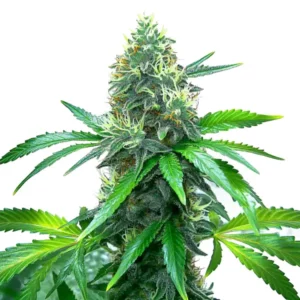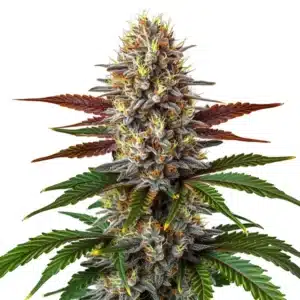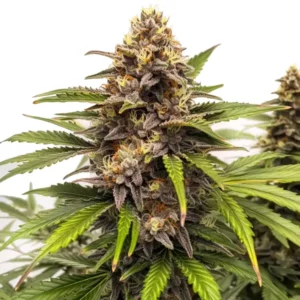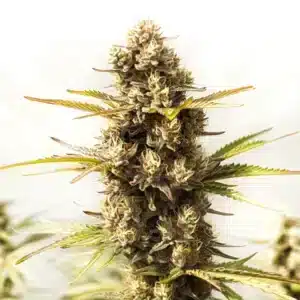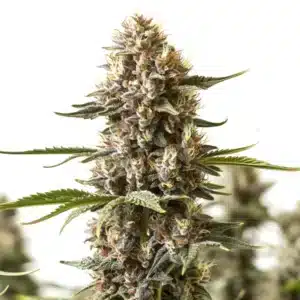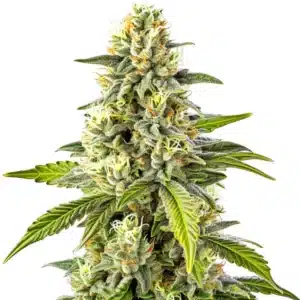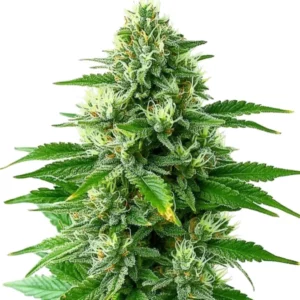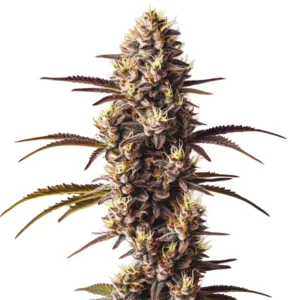
Cannabis Nitrogen Cycle Explained
When diving into the world of cannabis cultivation, the nitrogen cycle is a crucial concept to grasp. It’s about how nitrogen moves through the soil and plants. Nitrogen is a key element in plant health, affecting everything from leaf growth to overall vigor.
For both beginners and seasoned growers, recognizing how nitrogen flows can make a big difference. Get it right, and you’ll see lush, green plants. Misjudge it, and you might face yellowing leaves or stunted growth. This cycle is a fundamental aspect of cannabis cultivation.
Recommended Strains
Blue Dream
|
|
THC | 17% - 24% (Medium) |
|
|
Type | Feminized |
|
|
Yield | High |
|
|
Phenotype | 50% Indica / 50% Sativa |
OG Kush
|
|
THC | 20% - 24% (Medium) |
|
|
Type | Feminized |
|
|
Yield | Medium |
|
|
Phenotype | 55% Indica / 45% Sativa |
By breaking down the cannabis nitrogen cycle step-by-step guide, you can optimize your plant’s growth. It’s all about balance, ensuring your plants get what they need without overloading them. Let’s walk through how this cycle works in practical terms.
Nitrogen’s Role in Cannabis Growth
Nitrogen is a building block of chlorophyll, the green pigment in plants. Chlorophyll is essential for photosynthesis, the process by which plants make their food. Without enough nitrogen, cannabis plants can’t grow efficiently.
Every stage of cannabis development relies on nitrogen. From seedling to flowering, nitrogen supports leaf and stem growth. During the vegetative stage, plants need more nitrogen to build foliage. This is where strains like Blue Dream from Blimburn Seeds really thrive.
Knowing the nitrogen cycle in cannabis growth is essential for maximizing plant health. This involves acknowledging how nitrogen is absorbed and utilized during different growth phases. When growers understand this, they can tailor their nutrient strategies to each stage of development.
Moreover, nitrogen’s role extends beyond just leaf and stem growth. It also plays a part in protein synthesis, which is vital for cell division and growth. By maintaining optimal nitrogen levels, growers can ensure robust plant structure and resistance to various stresses.
How Nitrogen Affects Cannabis Plant Development
In early growth stages, nitrogen promotes rapid leaf production. It’s like giving your plant a daily dose of energy. This energy is crucial for setting a strong foundation. Without it, plants may become weak and susceptible to disease.
As your cannabis plant shifts to flowering, the nitrogen requirement changes. Too much can hinder bud formation. Striking the right balance is key. For instance, strains such as OG Kush adjust well to these shifts due to their robust nature.
Knowing how nitrogen affects cannabis plant development allows growers to manage their nutrient regimens effectively. This understanding helps prevent issues like nutrient burn or stunted growth, ensuring plants reach their full potential.
The cannabis nitrogen cycle explained in terms of plant development highlights the importance of timing. Each phase requires specific adjustments to nitrogen levels to support healthy transitions, such as moving from vegetative growth to flowering.
Promos & Deals
Cannabis Nitrogen Cycle Step-by-Step Guide
The nitrogen cycle starts with organic matter in the soil. Microorganisms break down this material, releasing nitrogen in a form plants can absorb. This process is known as mineralization.
Next is nitrification, where bacteria convert ammonium into nitrates, a form usable by plants. It’s a vital step in the cannabis nitrogen cycle explained. Without it, plants struggle to access the nitrogen they need.
Following nitrification, the cycle involves plant absorption, where roots take up nitrates. This step is crucial in the cannabis nitrogen cycle step-by-step guide, as it directly influences plant growth and development.
Finally, denitrification occurs, where excess nitrogen is returned to the atmosphere. This helps prevent nitrogen buildup in the soil, maintaining a balance within the cannabis cultivation and nitrogen cycle relationship.

Optimizing Nitrogen Cycle for Cannabis Yield
Proper soil management can enhance this cycle. Using compost or organic fertilizers supports the bacteria that drive nitrification. This not only boosts nitrogen availability but also enriches the soil ecosystem.
Crop rotation and cover cropping are other effective techniques. They maintain soil health and ensure a steady nitrogen supply. For instance, rotating with legumes can naturally replenish nitrogen levels.
Optimizing nitrogen cycle for cannabis yield involves continuous monitoring and adjustments. By understanding the demands of each growth stage, growers can apply nutrients more effectively, maximizing yield potential.
Additionally, integrating sustainable practices like the use of biochar can improve soil structure and nutrient retention, further enhancing the cannabis nitrogen cycle’s efficiency and the overall health of the crop.
Practical Tips for Managing Nitrogen in Cannabis Cultivation
Regular soil testing is a great way to track nitrogen levels. These tests show you exactly what your soil needs, helping you adjust your fertilization plan accordingly. This ensures your plants receive the right amount of nutrients.
Consider using slow-release fertilizers. They provide a steady nutrient supply over time, reducing the risk of nitrogen spikes. This approach aligns with the cannabis cultivation and nitrogen cycle relationship, promoting consistent growth.
Another practical tip is to observe plant signals. Changes in leaf color or growth patterns can indicate nitrogen imbalances, allowing for timely interventions to correct these issues.
Furthermore, incorporating microbial inoculants can enhance nitrogen uptake efficiency. These beneficial microbes work symbiotically with plant roots, optimizing the nutrient absorption process.
Common Signs of Nitrogen Deficiency and Excess
Watch out for yellowing leaves, especially in lower areas of your plant. This is a classic sign of nitrogen deficiency. Addressing it early can prevent further stress on your plants.
Conversely, too much nitrogen can cause dark, overly lush foliage. It may sound good, but this can delay flowering and reduce yield. Adjusting nutrient levels can help bring your plants back into balance.
Besides to visual signs, nitrogen imbalances can affect the overall growth rate. Slow growth might indicate deficiency, while excessive vegetative growth can signal an excess.
Knowing these symptoms within the context of the cannabis nitrogen cycle explained helps growers make informed decisions, ensuring optimal plant health and productivity.
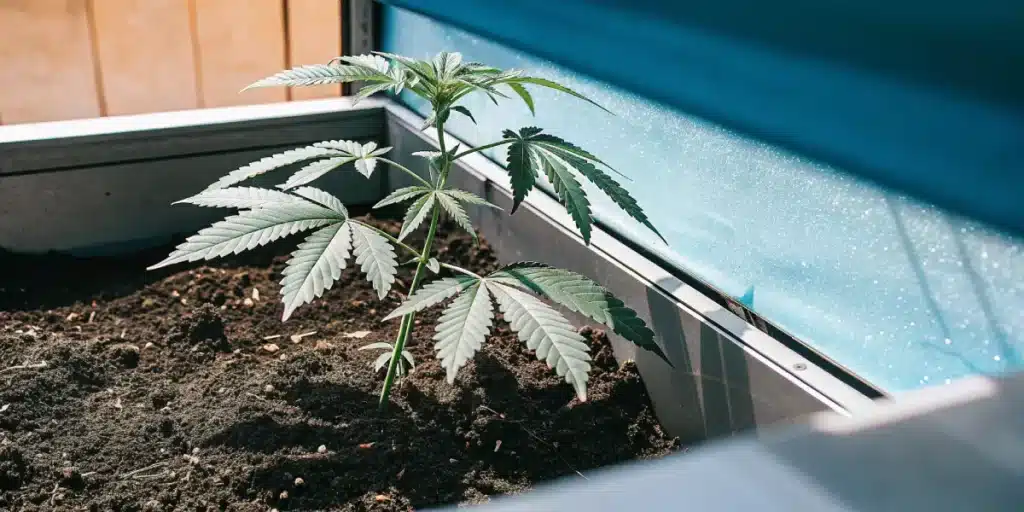
FAQs
What is the nitrogen cycle in cannabis cultivation?
The nitrogen cycle in cannabis cultivation refers to how nitrogen moves and transforms within the soil and plant system. It’s a natural process that involves the conversion of nitrogen into different forms, like ammonium and nitrates, which are absorbed by plants.
This cycle is crucial because nitrogen impacts plant growth and health. Managing it well can lead to stronger plants and better yields, making it an essential part of cannabis farming.
Knowing the nitrogen cycle in cannabis growth is not just about maintaining health but also about maximizing efficiency. By optimizing each step, growers can improve sustainability and crop outcomes.
The cycle’s complexity requires a balanced approach, considering environmental factors and plant needs. This holistic view ensures that the cannabis nitrogen cycle explained is both practical and applicable in diverse growing conditions.
How can I optimize the nitrogen cycle for cannabis yield?
Optimizing the nitrogen cycle involves several strategies. Start by using organic matter like compost to promote mineralization and nitrification. These processes make nitrogen available to plants in usable forms.
Regular soil testing and the use of slow-release fertilizers can also help maintain optimal nitrogen levels. These methods ensure your plants get a steady supply of nutrients, enhancing their growth and yield.
Incorporating precision agriculture techniques, such as automated nutrient delivery systems, can further optimize the nitrogen cycle. These systems provide precise amounts of nitrogen based on real-time plant needs.
Furthermore, understanding the role of soil pH in nitrogen availability can lead to better management practices. Maintaining a neutral pH supports efficient nutrient uptake and overall plant health.
Why is nitrogen so important for cannabis plants?
Nitrogen is vital for cannabis plants because it is a core element of chlorophyll, which is necessary for photosynthesis. Photosynthesis allows plants to convert light into energy, fueling their growth and development.
Without sufficient nitrogen, plants can become weak, with yellowing leaves and poor growth. This nutrient supports the formation of new leaves and stems, making it crucial during the vegetative stage.
Additionally, nitrogen plays a role in amino acid formation, essential for protein synthesis. This supports all cellular functions and contributes to the plant’s overall vigor and resilience.
Knowing the importance of nitrogen in the context of the cannabis nitrogen cycle explained underscores its role in achieving optimal plant performance and yield.
What happens if my cannabis plants have too much nitrogen?
Excess nitrogen in cannabis plants can lead to overly lush, dark green leaves. While this might seem beneficial, it can delay flowering and reduce bud quality and yield.
Too much nitrogen can also cause toxicity, known as nutrient burn, which damages the plant. Adjusting your nutrient regimen and monitoring soil levels can help prevent these issues.
Over-fertilization can also lead to environmental concerns, as excess nitrogen can leach into water systems. Responsible management is crucial to prevent negative impacts on both plants and the environment.
By following the cannabis nitrogen cycle step-by-step guide, growers can avoid these pitfalls and maintain a healthy, productive garden.
What are some practical tips for managing nitrogen levels?
To manage nitrogen levels effectively, regular soil testing is key. These tests provide insights into nutrient deficiencies or excesses, helping you adjust your fertilization practices accordingly.
Additionally, consider integrating organic fertilizers and practicing crop rotation. These methods support a balanced nitrogen cycle, ensuring your cannabis plants remain healthy and productive throughout their lifecycle.
Implementing a schedule for nutrient application can also help prevent over- or under-fertilization. Consistency in feeding ensures plants receive the right nutrients at the right time.
Finally, staying informed about new cultivation techniques and products can provide innovative solutions for managing nitrogen efficiently, enhancing the cannabis cultivation and nitrogen cycle relationship.



